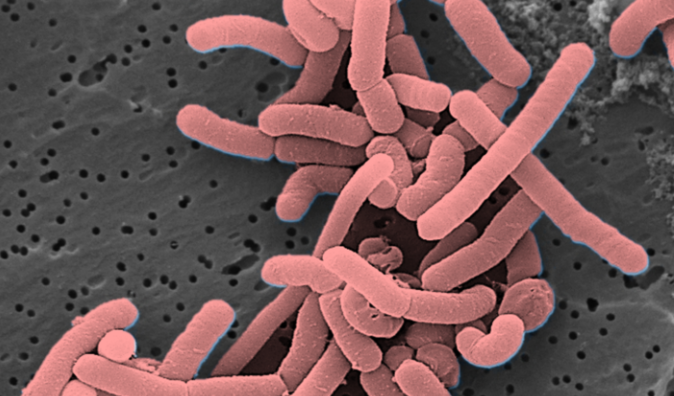
Souring of milk is due to
A. Aerobic bacteria
B. Anaerobic bacteria
C. Both A and B
D. None of the above
Answer
483.9k+ views
Hint: A gram-positive, bacillus shaped bacteria is responsible for the souring of milk and can survive without oxygen.
Complete Answer:
Lactobacillus are gram-positive bacteria, which can carry out the fermentation process of milk, in order to turn milk into curd and it can survive without oxygen.
During the fermentation process, lactose fermenting bacteria utilizes lactose of milk to gain energy and lactic acid is produced as a by-product, and the presence of lactic acid causes souring of the milk and results in the formation of curd.
Therefore the correct answer to the given question is B, i.e. the souring of milk occurs due to anaerobic bacteria.

Additional information –
- Lactobacillus genus comes under the bacilli family, with 180 discovered species till now. Some species are evident to be facultative anaerobes, while it is proved to be an aerotolerant anaerobe till now.
- Facultative anaerobes are those organisms that utilize oxygen for their energy gain but can turn into anaerobic if conditions become unfavorable.
- Aero tolerant anaerobes are those which utilize their fermentative capability for the ATP production and do not require oxygen, also they can protect themselves against the free oxygen radical but the intolerant anaerobes may get damaged due to the free oxygen radical attack.
Note:
- Lactobacillus fermentum is the most used bacterial species in the souring of milk as they hold probiotic nature.
- These lactobacillus strains, since they have carbohydrate processing characteristic features, are highly useful in food industries and are considered as good for health. They are naturally resistant to some naturally occurring antibiotics.
- Few examples are Lactobacillus acidophilus, L. fermentum, L. helveticus
- Other lactose fermenting groups like lactococci, leuconostocs or pediococcus are also used for souring milk sometimes.
Complete Answer:
Lactobacillus are gram-positive bacteria, which can carry out the fermentation process of milk, in order to turn milk into curd and it can survive without oxygen.
During the fermentation process, lactose fermenting bacteria utilizes lactose of milk to gain energy and lactic acid is produced as a by-product, and the presence of lactic acid causes souring of the milk and results in the formation of curd.
Therefore the correct answer to the given question is B, i.e. the souring of milk occurs due to anaerobic bacteria.

Additional information –
- Lactobacillus genus comes under the bacilli family, with 180 discovered species till now. Some species are evident to be facultative anaerobes, while it is proved to be an aerotolerant anaerobe till now.
- Facultative anaerobes are those organisms that utilize oxygen for their energy gain but can turn into anaerobic if conditions become unfavorable.
- Aero tolerant anaerobes are those which utilize their fermentative capability for the ATP production and do not require oxygen, also they can protect themselves against the free oxygen radical but the intolerant anaerobes may get damaged due to the free oxygen radical attack.
Note:
- Lactobacillus fermentum is the most used bacterial species in the souring of milk as they hold probiotic nature.
- These lactobacillus strains, since they have carbohydrate processing characteristic features, are highly useful in food industries and are considered as good for health. They are naturally resistant to some naturally occurring antibiotics.
- Few examples are Lactobacillus acidophilus, L. fermentum, L. helveticus
- Other lactose fermenting groups like lactococci, leuconostocs or pediococcus are also used for souring milk sometimes.
Recently Updated Pages
Master Class 11 Accountancy: Engaging Questions & Answers for Success

Express the following as a fraction and simplify a class 7 maths CBSE

The length and width of a rectangle are in ratio of class 7 maths CBSE

The ratio of the income to the expenditure of a family class 7 maths CBSE

How do you write 025 million in scientific notatio class 7 maths CBSE

How do you convert 295 meters per second to kilometers class 7 maths CBSE

Trending doubts
10 examples of friction in our daily life

One Metric ton is equal to kg A 10000 B 1000 C 100 class 11 physics CBSE

Difference Between Prokaryotic Cells and Eukaryotic Cells

State and prove Bernoullis theorem class 11 physics CBSE

What organs are located on the left side of your body class 11 biology CBSE

Write down 5 differences between Ntype and Ptype s class 11 physics CBSE




